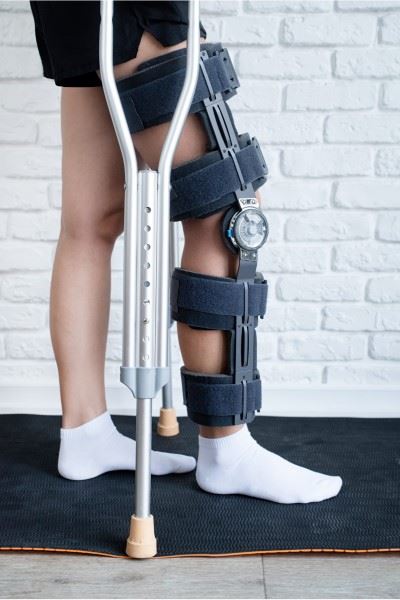-
Home
-
Understanding the Benefits and Types of ACL Knee Braces
Understanding the Benefits and Types of ACL Knee Braces
January 11, 2024
 The Anterior Cruciate Ligament, or ACL, is a significant structure in the knee joint that helps maintain the stability of the knee while engaging in sports and other activities. ACL tears can be a devastating injury for anyone, and they require extensive treatment and recovery. It is necessary to wear a brace to keep the knee stable and limit the range of motion so the ligament can heal successfully. In this article, we will discuss the benefits and types of ACL knee braces.
The Anterior Cruciate Ligament, or ACL, is a significant structure in the knee joint that helps maintain the stability of the knee while engaging in sports and other activities. ACL tears can be a devastating injury for anyone, and they require extensive treatment and recovery. It is necessary to wear a brace to keep the knee stable and limit the range of motion so the ligament can heal successfully. In this article, we will discuss the benefits and types of ACL knee braces.
What is an ACL Knee Brace?
An ACL knee brace is a specially designed brace that supports and protects the knee joint, restricting range of motion and providing support to the ACL. They are typically made of materials such as neoprene, plastic, nylon, or elastic, and they come in many different sizes and styles to suit the needs of the user.
Benefits of an ACL Knee Brace
The primary benefit of an ACL knee brace is in the prevention of further injury, particularly in athletes recovering from ACL surgery or those with existing knee injuries. The brace helps to stabilize the knee joint, reducing the risk of unintended movements that could damage the ACL or other ligaments. Additionally, an ACL knee brace can help relieve pain and ease inflammation while also promoting faster recovery.
Types of ACL Knee Braces
When it comes to ACL braces, there are various types available that cater to different needs. Most are adjustable and can be worn right out of the box—in some cases, however, it may be necessary to purchase a custom-fitting brace. While it is important to know your options, you should always consult a healthcare professional when selecting a brace to fit your needs.
- Prophylactic Braces: These braces are designed to prevent ACL injuries and are typically worn by athletes who play sports that are classified as high-risk, such as football, basketball, and skiing. They provide support and stability to the knee joint during physical activities.
- Rehabilitative Braces: These braces are commonly used after ACL reconstruction or surgery to provide support and protect the healing ligament during the recovery process. They help limit movement in the knee joint to promote healing and prevent further damage.
- Functional Braces: Functional braces are designed for individuals who have already experienced an ACL injury. They provide support and stability while allowing for a specific range of motion, allowing users to engage in physical activities with reduced risk of re-injury.
- Unloader Braces: Unloader braces are primarily used for people with osteoarthritis in the knee joint. They offload the weight from the affected side of the knee, reducing pain and improving mobility.
How Long to Wear an ACL Brace
The length of time you should wear an ACL brace can vary depending on several factors, including the severity of your injury, your doctor's recommendations, and your progress in rehabilitation. Generally, ACL braces are used in the early stages of recovery to provide support and stability to the knee joint.
In the initial phase after ACL surgery, you may be advised to wear a brace constantly for a few weeks to protect the reconstructed ligament and promote healing. As you progress in your rehabilitation program, your doctor or physical therapist will guide you in gradually reducing the duration of brace use.
It's important to note that every individual's recovery process is unique, so it's crucial to follow the specific instructions given by your healthcare professional. They will assess your progress and provide guidance on when it is appropriate to discontinue brace usage.
The Anterior Cruciate Ligament plays a crucial role in knee stability during physical activities, and when injured, it demands comprehensive treatment and care. ACL knee braces facilitate a successful recovery by helping prevent further injuries, promote faster healing, and relieve pain. With the right brace and proper usage, individuals can navigate their recovery with enhanced support and a reduced risk of re-injury, ultimately regaining stability and mobility in their knee joints.